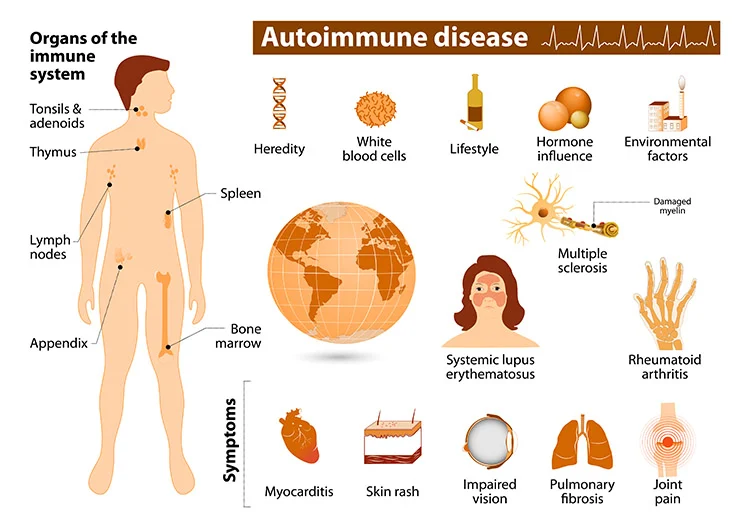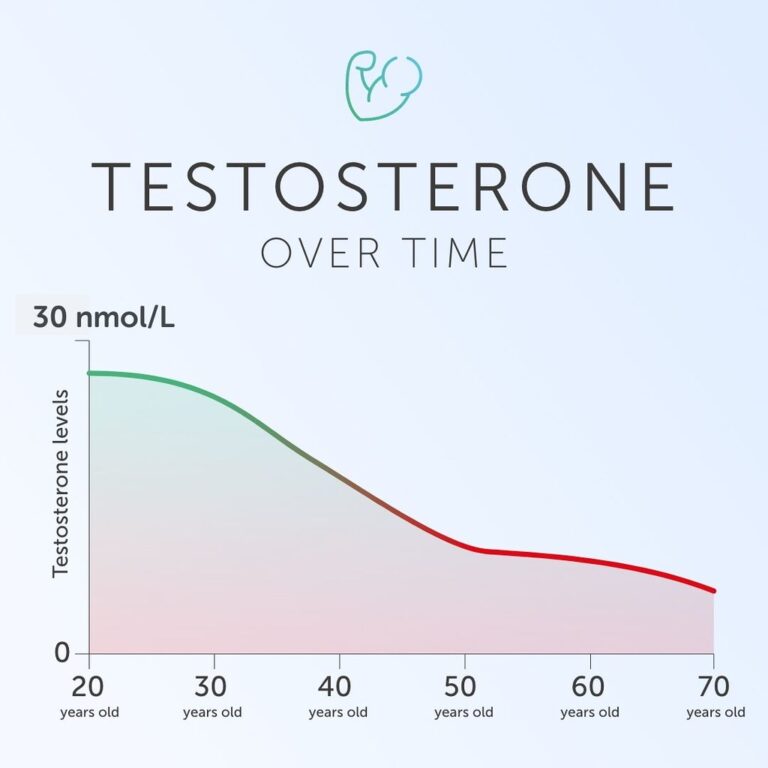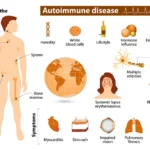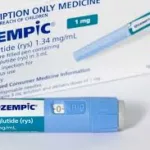 |
| Photo from everydayhealth.com |
Hashimoto’s thyroiditis is an autoimmune condition that affects the thyroid gland. The thyroid gland is a butterfly-shaped gland near the base of the neck, directly below the Adam’s apple. The thyroid gland generates hormones that aid in the regulation of various bodily functions.
An autoimmune condition is a disease in which the immune system attacks healthy tissues. Immune cells in Hashimoto’s disease cause the thyroid’s hormone-producing cells to die. The condition usually causes a decrease in hormone production (hypothyroidism).
Although Hashimoto’s disease can affect anyone, it is most frequent among middle-aged women. Thyroid hormone replacement is the major treatment.
Hashimoto’s thyroiditis, chronic lymphocytic thyroiditis, and chronic autoimmune thyroiditis are all names for Hashimoto’s disease.
WHAT ARE THE SYMPTOMS OF HASHIMOTO’S DISEASE?
- Sluggishness and fatigue
- heightened cold sensitivity
- Increased drowsiness
- Thyroid swelling (goiter)
- Face puffiness
- Nails that are brittle
- Loss of hair
- Increased tongue size
- Dry skin
- Constipation
- Muscle fatigue
- Aches, soreness, and rigidity in the muscles
- Joint stiffness and discomfort
- Menstrual bleeding that is irregular or profuse
- Depression
- Memory or concentration issues
WHAT ARE THE CAUSES OF HASHIMOTO’S DISEASE?
- Genetic factors
- Environmental factors, such as infection, stress, or radiation exposure
- The interactions of environmental and genetic factors
WHAT ARE THE RISK FACTORS OF HASHIMOTO’S DISEASE?
- Sex: Women are far more prone than men to have Hashimoto’s disease.
- Age: Hashimoto’s illness can strike at any age, but it is most frequent in middle life.
- Other autoimmune diseases: If you have another autoimmune condition, such as rheumatoid arthritis, type 1 diabetes, or lupus, you are more likely to acquire Hashimoto’s disease.
- Family history and genetics: If you have a family history of thyroid issues or other autoimmune diseases, you are more likely to develop Hashimoto’s disease.
- Pregnancy: Changes in immunological function that occur during pregnancy may play a role in Hashimoto’s disease that develops after pregnancy.
- Excessive iodine consumption: Too much iodine in the diet may act as a trigger in persons who already have Hashimoto’s disease.
- Exposure to radiation: People who are exposed to high levels of environmental radiation are more likely to develop Hashimoto’s disease.
WHAT ARE THE COMPLICATIONS OF HASHIMOTO’S DISEASE?
- Goiter: A goiter is a thyroid enlargement. As thyroid hormone production decreases owing to Hashimoto’s disease, the pituitary gland sends signals to the thyroid to produce more. This cycle has the potential to develop in a goiter. Although it is normally not painful, a large goiter can impair your look and may impede with swallowing or breathing.
- Heart issues: Hypothyroidism can cause heart failure, an enlarged heart, and irregular heartbeats. It can also cause high levels of low-density lipoprotein (LDL) cholesterol, also known as “bad” cholesterol, which is a risk factor for cardiovascular disease and heart failure.
- Problems with mental health: Depression and other mental health concerns may appear early in Hashimoto’s disease and worsen with time.
- Sexual and reproductive problems: Hypothyroidism in women can cause decreased sexual desire (libido), failure to ovulate, and irregular and heavy menstrual flow. Men with hypothyroidism may experience decreased libido, erectile dysfunction, and sperm count.
- Pregnancy complications: During pregnancy, hypothyroidism may raise the risk of miscarriage or premature birth. Babies born to mothers who have untreated hypothyroidism are at risk of developing autism, speech impairments, and other developmental abnormalities.
- Myxedema: Long-term, severe, untreated hypothyroidism can lead to the development of this rare, life-threatening illness. Drowsiness is followed by deep lethargy and unconsciousness as indications and symptoms. A myxedema coma can be caused by exposure to cold, sedatives, illness, or other physical stress. Myxedema necessitates rapid medical attention.
HOW IS HASHIMOTO’S DISEASE DIAGNOSED?
Thyroid function testing
- TSH test: The pituitary gland produces thyroid stimulating hormone (TSH). When the pituitary gland recognizes low thyroid hormone levels in the blood, it delivers TSH to the thyroid to stimulate thyroid hormone production. TSH levels in the blood that are too high indicate hypothyroidism.
- T-4 tests: Thyroxine is the primary thyroid hormone (T-4). A low T-4 level in the blood validates the results of a TSH test and suggests that the problem is within the thyroid itself.
Antibody tests
WHAT ARE THE TREATMENTS FOR HASHIMOTO’S DISEASE?
T-4 hormone replacement therapy
Dosage monitoring
Precautions
The effects of other substances
- Products made from soy
- Foods high in fiber
- Iron supplements, including iron-containing multivitamins
- Cholestyramine (Prevalite), a cholesterol-lowering drug.
- Some antacids contain aluminum hydroxide.
- Sucralfate, which is an ulcer treatment.
- Calcium supplements
T-3 hormone replacement therapy
ALTERNATIVE MEDICINES FOR HASHIMOTO’S DISEASE
- The balance of T-4 and T-3 in animals differs from that in humans.
- The precise amount of T-4 and T-3 in each batch of a natural extract product can vary, resulting in unpredictability of these hormone levels in your blood.






